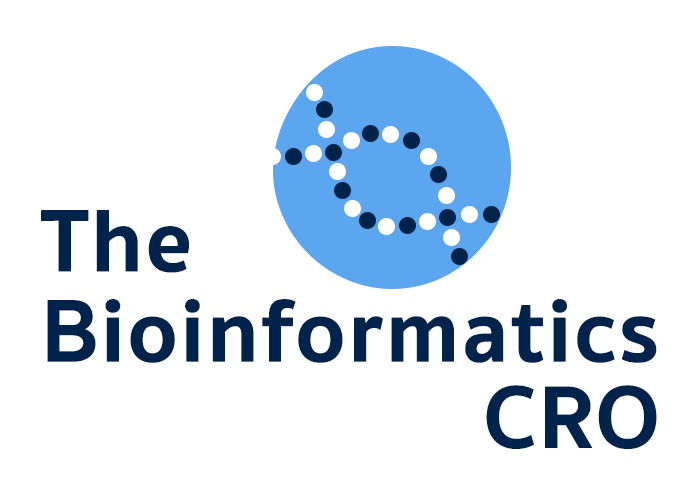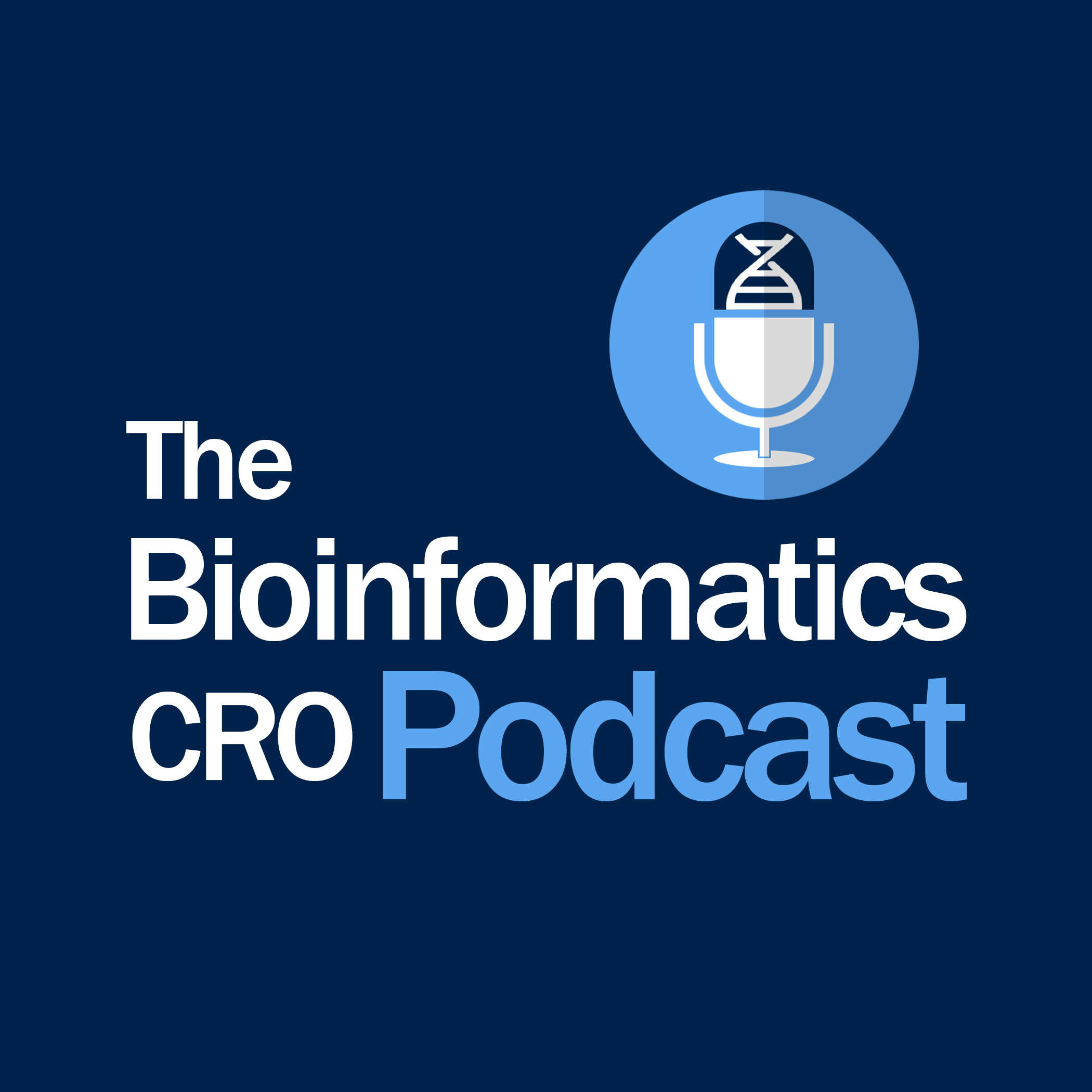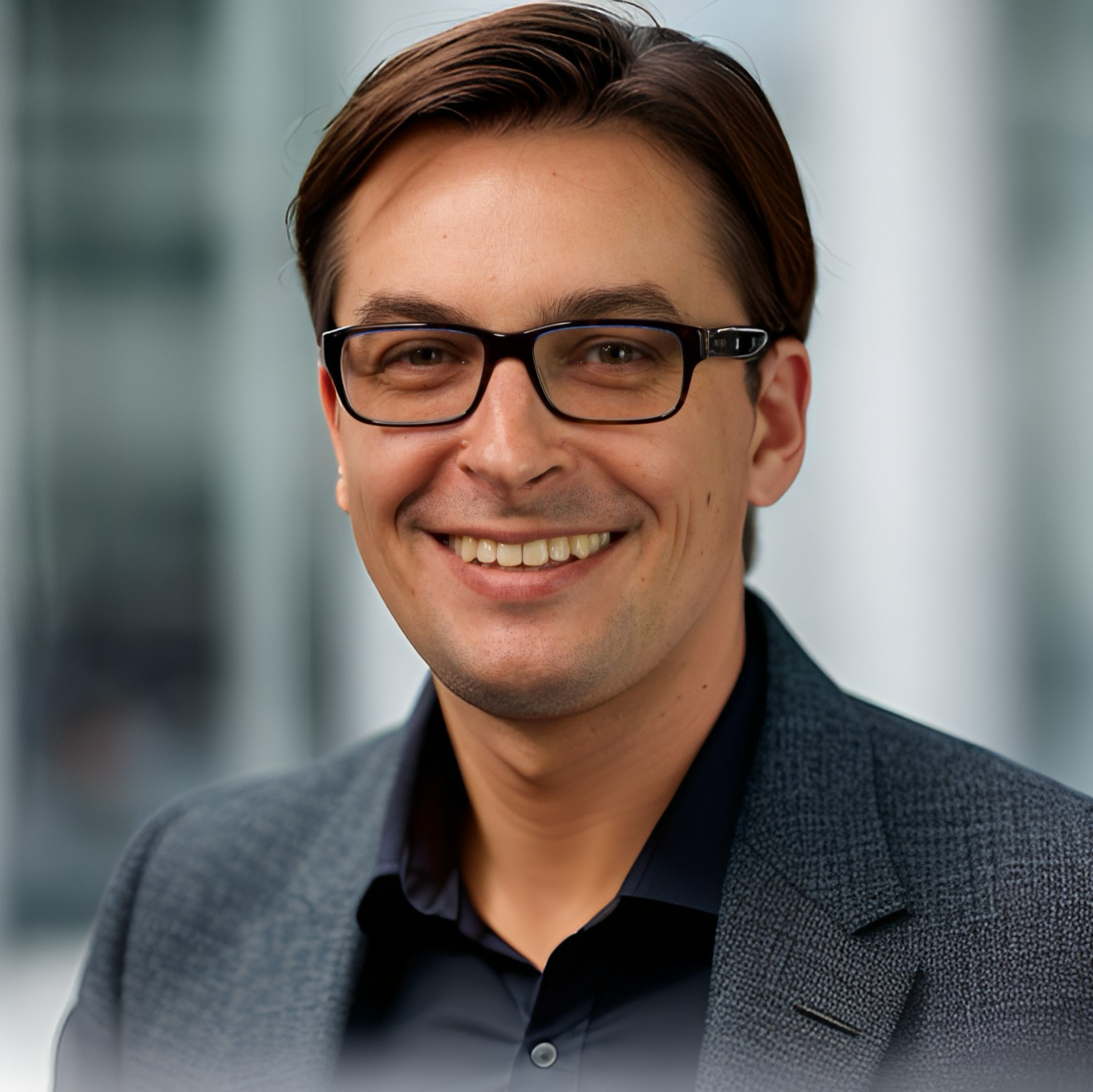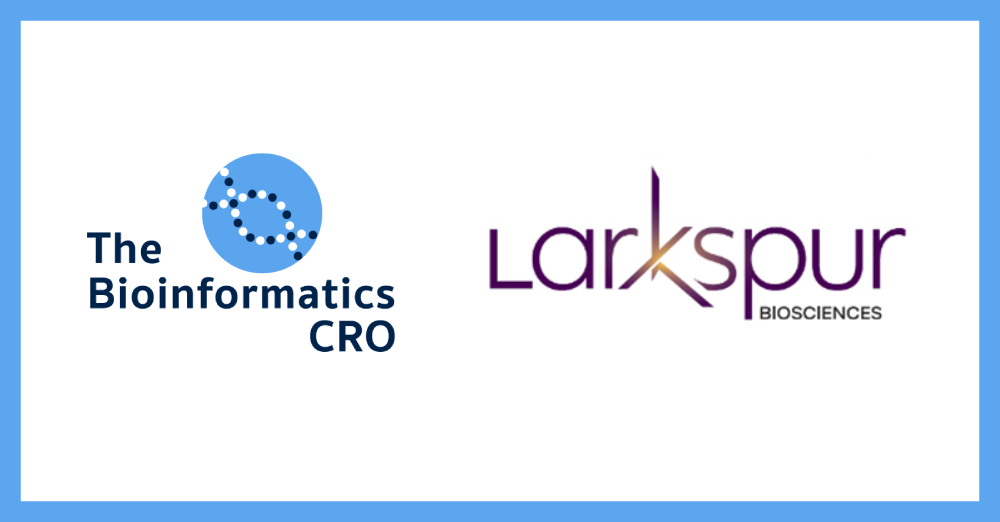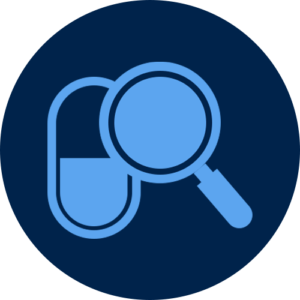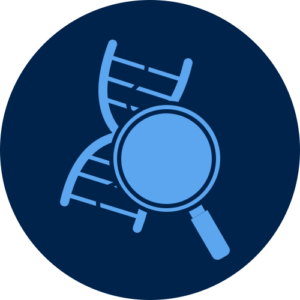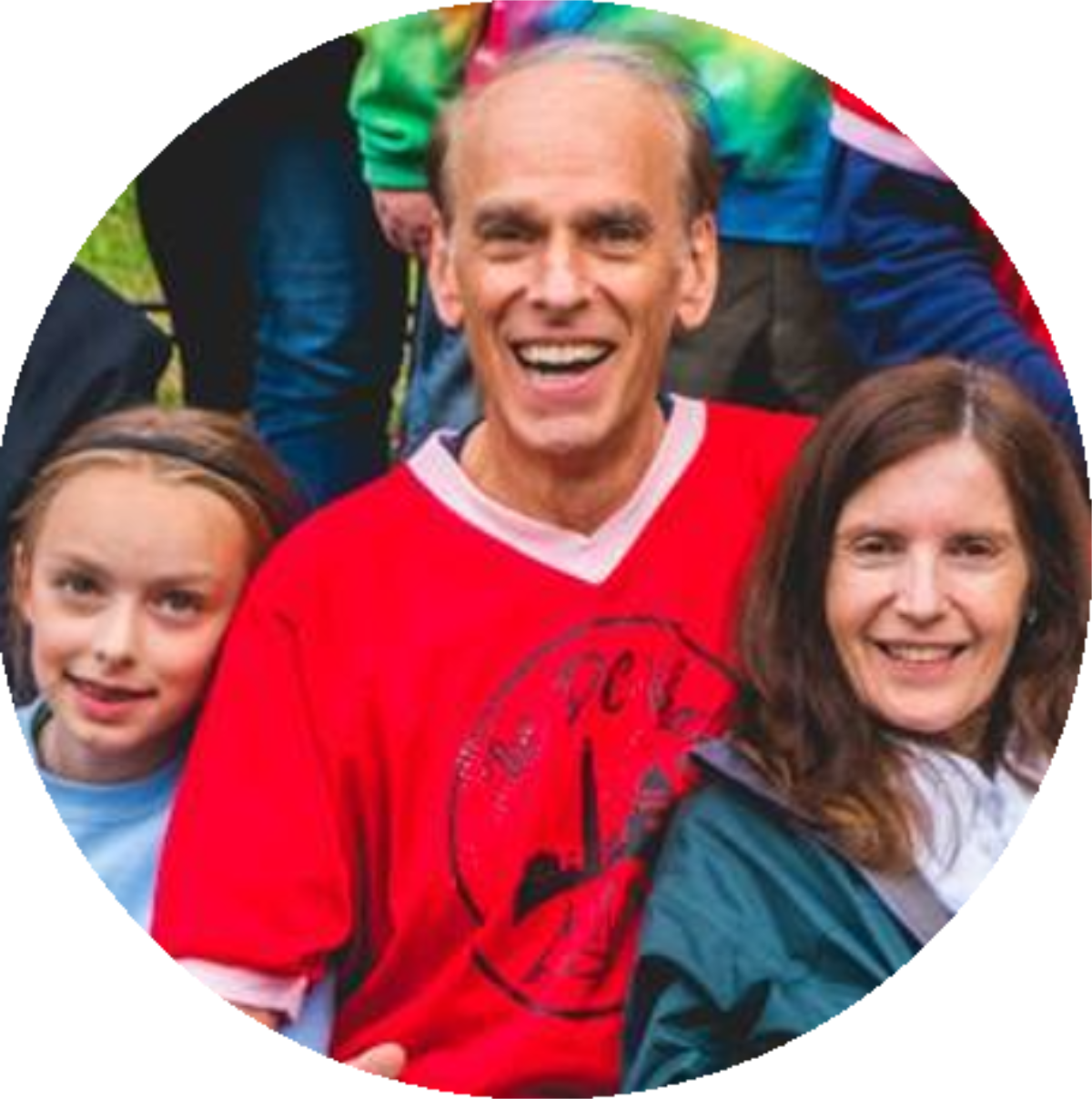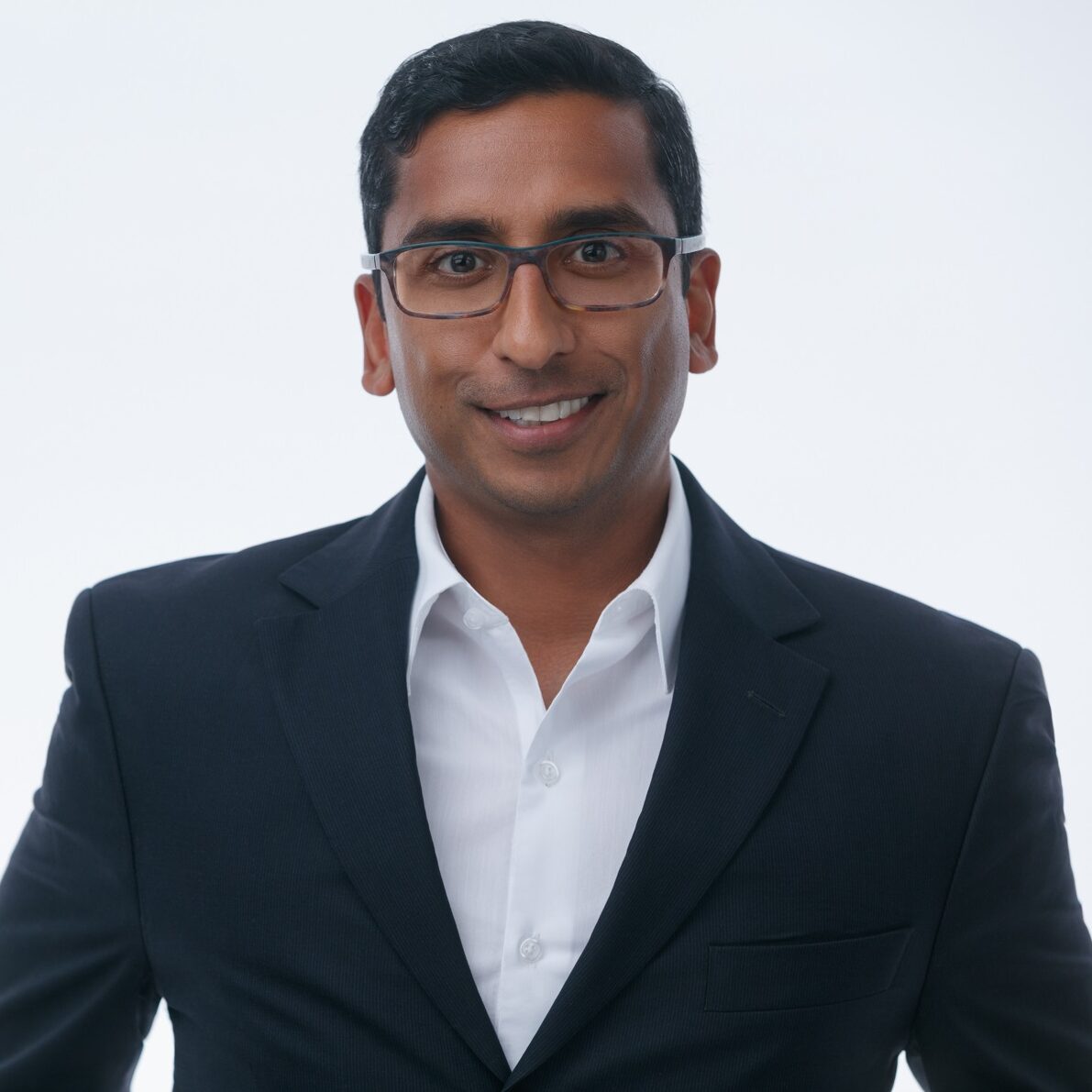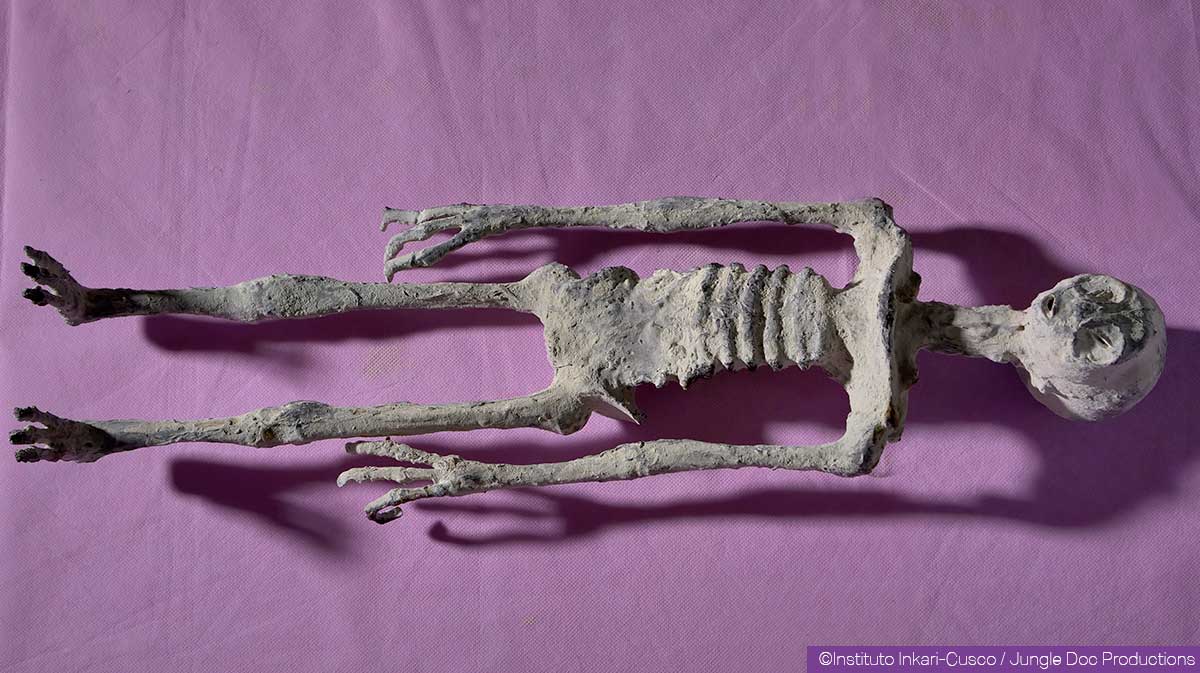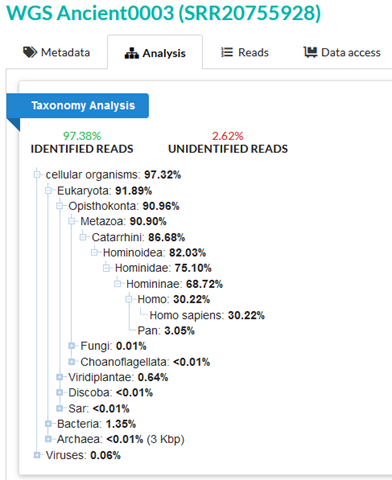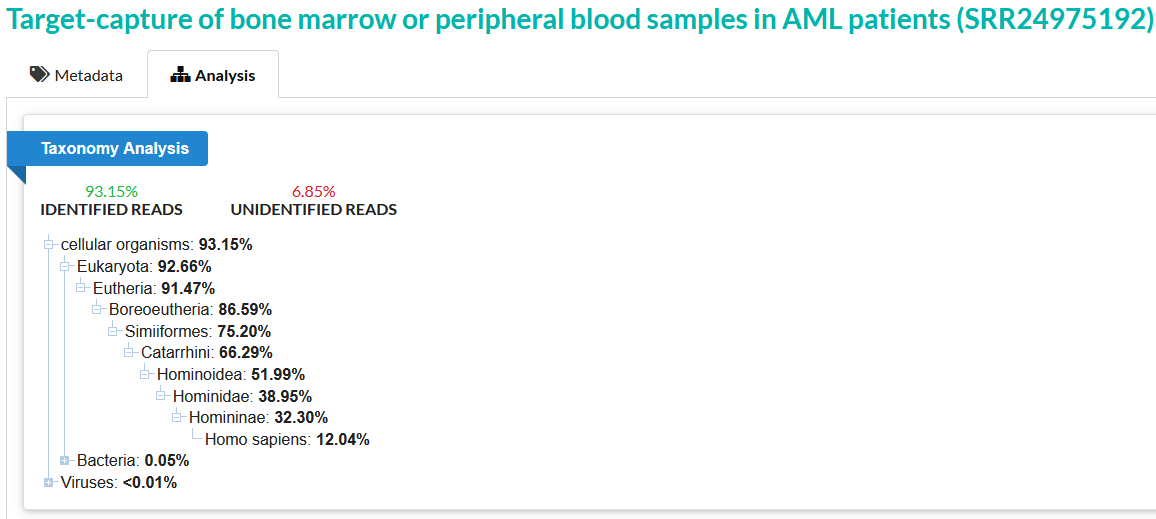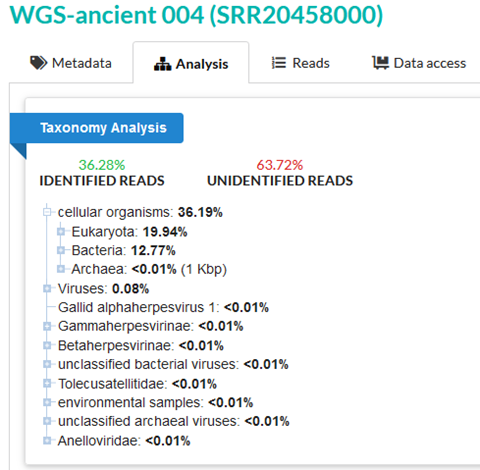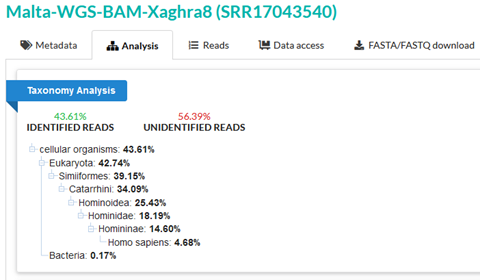The Bioinformatics CRO Podcast
Episode 59 with Wolfgang Brysch
On The Bioinformatics CRO Podcast, we sit down with scientists to discuss interesting topics across biomedical research and to explore what made them who they are today.
You can listen on Spotify, Apple Podcasts, Amazon, YouTube, Pandora, and wherever you get your podcasts.
Wolfgang Brysch is the Co-Founder and CSO of iüLabs, which produces plant-based natural compound supplements, and of MetrioPharm, which focuses on small molecule treatments for infectious and inflammatory disease.
Transcript of Episode 59: Wolfgang Brysch
Disclaimer: Transcripts may contain some errors.
[Grant Belgard]: Welcome to the Bioinformatics CRO podcast. I’m Grant Belgard and joining me is Wolfgang Brysch. Wolfgang, welcome.
[Wolfgang Brysch]: Yeah, thanks Grant. Great to be here.
[Grant Belgard]: Happy to have you. Can you tell us a bit about yourself?
[Wolfgang Brysch]: Yeah, I’m a medical doctor by background, but spent most of my life, professional life in research and later on in biotech, drug development. And for the last about 10 years also got increasingly interested in nutraceuticals, natural compounds, etc. All focusing around the topics of chronic inflammation, inflammaging, aging, etc.
[Grant Belgard]: Fantastic. Can you tell us a bit about how you’re translating that? Your two companies.
[Wolfgang Brysch]: Yeah, my main sort of professional hat on is as a chief scientific officer of a company that I co-founded. It’s called MetrioPharm. And there we develop a small molecule, a ethical drug as an anti-inflammatory. And that sort of led to the whole inflammatory research and immunology research led to also get me interested in the whole topic of aging, chronic inflammatory, degenerative diseases. So that that’s my main hat. And through this research over the years, I, of course, in the scientific literature, etc., I came more and more across also very interesting research and results on natural compounds, the, of course, the effect of lifestyle, nutrition, etc. And that also piqued my interest.
And a couple of years ago, out of some, I’ll talk about this later, a special event triggered the foundation of another company called iüLabs, where we produced or develop and produce nutraceutical supplements with the same sort of general, in the same general area, but of course, not on the drug side, but more on the supplemental side.
[Grant Belgard]: So it’s a really interesting strategy, right? Generally, people walk one path or the other, and you’re going down both at once. Can you discuss the rationale behind that? And also, I’d love to hear your thoughts on chatter around changes in regulatory pathways and how that might impact.
[Wolfgang Brysch]: Yeah. So the original impetus to go this in this parallel path was that during the drug development, what I realized that many of the diseases are the chronic diseases are very complex and multifaceted diseases with a lot of different pathologic drivers. And that very often, single drugs or single drug mechanisms are not enough to cover all the different pathways that are involved. And also, what is coming out in research more and more, and also my understanding and my experience is that metabolism plays a major role. Also, also the normal physiological metabolism in driving diseases in also in the efficacy of pharmaceutical drugs that you’re using.
So it’s basically this multi-pronged approach, especially in chronic diseases and aging, that I think we have to follow up in the future. And that’s basically how I came to this dual track.
[Grant Belgard]: What do you think are some of the most promising strategies to control inflammation and its impact on longevity? And how does MP1032 fit into that?
[Wolfgang Brysch]: Yeah. One of the mechanisms that our lead drug is addressing is oxidative stress and the redox balance. And that is, of course, intimately tied with the cellular energy metabolism. And so also over the years, I more and more came to the conclusion that the energy metabolism, energy production, cellular energy production, is really at the core and often driver of all kinds of diseases that ensue downstream. And so that is really where we can really have an impact in metabolism.
And that goes both for pharmaceutical drugs and for lifestyle changes up to all the way to nutraceuticals, optimizing the energy metabolism that will have really very profound and broad acting positive effects on all kinds of disease states and of aging, which is not in a narrow sense of disease state, but it is driving diseases, degenerative diseases of aging.
[Grant Belgard]: What are other strategies for controlling chronic inflammation?
[Wolfgang Brysch]: Well, the one of the strategies that we are using or that we are addressing is to normalize oxidative stress, which is the response of the cell and of organs to all kinds of stressors, external stressors, be it injury or infections, et cetera. So it converges very much converges on, on these oxidative stress, which is a sort of a master signal, again, to, to drive inflammatory responses through certain gene switches like NF-kappa B and RF2. Those are master switches that oxidative stress or these stress responses of the cell elicit to, to then drive inflammation. So inflammation is always already the result of something upstream and it’s on this upstream path that we can really do a lot to mitigate inflammation, chronic degenerative processes.
[Grant Belgard]: What are the largest drivers of chronic inflammation today?
[Wolfgang Brysch]: I would say it’s through, as I said, different insults to the cell or to, to organs, whether they are chemical stressors, infections, they are autoimmune processes. And all of these trigger genetic switches like NF-kappa B is one of the master switches and that downstream then causes the, the expression of pro-inflammatory cytokines, TNF-alpha, IL-6 are very prominent ones. And those then bring this whole machinery of inflammation or start this whole machinery of inflammation, which if you have a, like an acute injury, like a wound or something like that, then subsides again.
But in chronic inflammatory diseases, also if the energy metabolism behind this, on which the cell operates is defunct to a certain extent, very often these pro-inflammatory signals, chronists get chronic. And then they, they, this, the inflammation doesn’t stop. And that sort of over time, then of course injures all kinds of tissues and organs and the chronic diseases that, that we have or that we see are then usually the weak points, the individual weak points that every one of us has maybe genetically. So in one person, the chronic inflammatory process may result in Alzheimer’s disease, in someone else in joint degeneration or kidney failures, things like that.
So that’s the individual differences that we have, but it’s usually very, very common processes that drive all these different diseases.
[Grant Belgard]: After decades in pharma, you’ve become a champion of plant-driven compounds. How do you see traditional herbal medicine and modern biotech intersecting?
[Wolfgang Brysch]: What is interesting is that for a lot of these traditional plant compounds, we are starting to understand what the real mechanism of action is. Why are they beneficial? And that is, again, paradoxically, a lot of these plant compounds are pro-inflammatory or are very mild toxins. And the interesting thing is that these stimulate the cell or the cellular regenerative responses. A lot of the compounds or some of the compounds that are touted as anti-inflammatory are in fact, mild pro-inflammatory compounds. And they train or train the cell to respond better to these kinds of assaults. For example, they improve the antioxidant, the inert or innate antioxidant capacity of cells. Sometimes I say this is metabolic yoga for the cell. It’s the same.
You could easily say, okay, it’s the same as with muscle strength or something like that. Nobody gets more muscle strength by sitting on the sofa. We stress our muscles to a certain extent. Of course, we shouldn’t overstress the muscle because then they get tears or something like that. But that sort of builds muscle strength. And that is exactly the same mechanism that is on the cellular level and the metabolic level that is a mild, well-pointed stress can, over time, train the cell to become more resilient. That’s the interesting thing that comes out of a lot of these natural compounds.
[Grant Belgard]: Are these compounds that one would take for a very prolonged period or for a much shorter period of time then? You take it for a couple of weeks and then stop again later?
[Wolfgang Brysch]: In these sort of stimulatory, small or lower concentrations, there’s good evidence that they are very beneficial if we take them over a long time. So there is no toxicity accumulating. Bear in mind that many of these compounds also are in a healthy diet. So we don’t stop healthy diets, fear of having natural compounds for a prolonged period of time. So I think in the dosing is one important point. It’s even these small amounts that do have these effects. And very importantly also that many of these compounds work synergistically. So a lot of the studies on natural compounds are coming from the pharma side or the pharma thinking are made, are done on with large doses of single substances, which is often not what is really ideal.
It’s the small amounts and the synergistic effects of different of these compounds that address and quote unquote, slightly stress different metabolic pathways that have a hugely synergistic effect. Which on the other hand is something that is very hard to test in a traditional way, like in a controlled, placebo-controlled, double-blind trial, because if you test like three, four or five substances at once, it’s really hard to say which, which part of the effect is due to which, which substance this is mathematically you can, if you extrapolate you, you have like a gazillion different potential combinations. So also the study of these things is probably needs to be a bit different from the way we study single drugs.
[Grant Belgard]: How might that look?
[Wolfgang Brysch]: I think observational studies where we, of course, they can be placebo-controlled. I think that is still a very, very valid approach. And, but then what we can do is we just have to do as long as it’s safe or less trial and error, say, okay, we put together or that’s how we do it. We combine different natural compounds of which there is a certain kind of knowledge of the different pathways that they address. We try to, to combine compounds that, and substances that address different parts or different, for example, different enzyme pathways in the cell that are sort of interlinked.
So we are not just improving one pathway at a time, but different, do small improvements on different interlinked pathways, especially, for example, in the energy metabolism, in the Krebs cycle, in the electron transport chain, you can really nudge these systems to a higher overall performance. And there is an example that I often use is if you compare that with an assembly line, if you have an assembly line, you want to assemble cars and you want to increase production by about 10%, it’s no good to supply like 10 times the amount of tires at the station where you mount the tires, but you have to supply 10% more parts at each step. And that’s where you get the synergism and the overall improvement. And that’s the same for metabolism.
Single to, to address only a single step in metabolism is often not really effective.
[Grant Belgard]: What, if any changes do you think could be made to the current regulatory structure to better accommodate that?
[Wolfgang Brysch]: I think that’s the, if you do, if you want to do trials, if you want to get more information about and more evidence about the effect of these things, I think that what the FDA calls real world evidence is. So if you have clinical endpoints that really show in real life settings, outcomes that are meaningful for, let’s say, quality of life, for general sort of resilience or pain reduction in arthritis or something like that. I think that’s the way to go to look at single parameters or use surrogate markers is often very short-sighted or it just gives you a little, only a little fraction of the whole picture. And in the end, I think in medicine, sometimes we tend to treat symptoms and lab values rather than patients.
And I think it’s really important, is the positive change that you can get, is that meaningful for a patient? Is it, of course, is it safe? That’s very important. Is it long-term safe? And is it meaningful for a patient or is it only meaningful if you do a blood test?
[Grant Belgard]: What natural compounds excite you most in terms of scientific evidence and therapeutic potential?
[Wolfgang Brysch]: There are some classics and it’s like the curcumin is one of those compounds. It’s a very potent anti-inflammatory and antioxidant. Again, it’s actually in the small amounts, it’s a pro-oxidant. It trains the cell to be more resilient. Another substance is resveratrol, which has been touted very much hyped and said it doesn’t do any good at all. But it’s also, we understand now that it’s a sirtuin, it enhances sirtuins and it’s called an HDAC inhibitor. So it modulates the gene expression and that has wide, far-reaching, positive implications looking beyond single effects that you might want to see. Those are, for example, two compounds that I’m very excited about where we’ve seen very good results. There are others, phosphillic acids.
A lot of these sort of broadly used natural compounds are very effective. The only caveat or caveat with a lot of them is that their, what’s called bioavailability, is extremely low. For example, if you look at curcumin, the, if you take that as a powder or something like that, the bioavailability is about 0.1%. So 99.9% of what you ingest just goes straight into the, into the sewage, so to say. And that’s one thing where we also done some work and developed some technology to improve the bioavailability of these natural polyphenols, these plant compounds, which is a major, I think, improvement in the efficacy that, that you can get.
[Grant Belgard]: So you took an unusual path in founding the supplement company, a drug development company. What have you learned about bridging those two worlds?
[Wolfgang Brysch]: I think —
[Grant Belgard]: What advice would you give to biotech entrepreneurs who are considering which route they should go?
[Wolfgang Brysch]: You can go both routes as I did. I think what is really helpful is to have a solid scientific and biochemical background. If you look at these things, if you can, that you can critically read the literature and assess the literature, have a good biochemical and chemical understanding of these compounds. Because in a lot of the, if you look at a lot of the general way that supplements are done. And if you look at the people who are behind supplement companies there, I don’t want to dispute any of that, but sometimes there are like soccer stars or something like that. Definitely they know their game, but do they really understand biochemistry, et cetera, or it’s just a lot of hype. There’s the new big wonder natural compound every year that, that everyone is then hyping.
I think that’s stay away from that. I think we, we need to go back and we can utilize the rigor and, and that we are used to from, from the pharma side. And that’s, I think the big advantage or luck that I had that I came from pharma with all the sort of rigor and scrutiny that, that you’re under and then going venturing into the natural compounds. You can sort of transfer that to, to formulating and to assessing natural compounds and supplementation.
[Grant Belgard]: Shifting gears a little bit, I was wondering what biomarkers you’re tracking your MP10 program.
[Wolfgang Brysch]: One of the, the most consistent biomarker is interleukin-6 IL-6 is a good, very good biomarker of inflammation in a lot of diseases. And that is something that we very consistently see with MP1032 that we have a very good effect in, in, in mitigating that. And I think also what is important with that mechanistic approach is that these pro-inflammatory cytokines on the one hand, they drive chronic inflammation. So that’s not very good, but they also have a physiological function and a lot of pharmaceutical approaches in the past and still today are to completely block with an antibody or so completely block these cytokines. And I think that’s, that’s backfiring because then you get immunosuppression, you get an increased susceptibility to infection, et cetera.
So I think to design drugs and treatment regimens that go the middle ground, that normalize cellular function, I think is much, much more important than completely having very strong inhibitors. And that’s also something that I realized when, from the, from the nutraceutical space, where of course you’re not allowed to do health claims and all you’re allowed to say from the FDA and the European is that it aids normal function. And they, the regulators, I think interpret that, well, this is really not doing anything good, but in the end, if you can get your body, your cellular function back to normal, that’s, I think that’s the ultimate in healing. And that’s also —
[Grant Belgard]: That’s what you want.
[Wolfgang Brysch]: Drugs should do this, should not be completely blockers or attenuators. They should also strive to return or get functions, cell functions back to normal.
[Grant Belgard]: On that note, I understand MP1032 is explored for COVID-19. How does one go about designing a study to balance the anti-inflammatory action without blunting antiviral, and what are some generalizable lessons that came?
[Wolfgang Brysch]: This goes exactly along the same line that I just said, is to normalize cellular function. When you have, when SARS-CoV-2, the, when the virus infects a cell, it reprograms the cell. It changes the cellular environment to facilitate viral replication. And that is, and that sort of then downstream causes these inflammatory responses that it’s not really the virus that, that causes the inflammation. It’s the cell, the response of the infected cells and the immune system that reacts to this. And again, by normalizing, so to say, forcing the cellular metabolism and the redox state back to normal, creates an environment which is physiologic for the cell. But it’s very, not very, how to say, not very positive for viral replication.
So it’s, the mechanism is not really targeting the virus itself. It’s targeting the host, making the host normal and inhibiting or prohibiting the virus to change our metabolism in a way that is advantageous for the virus. And that’s basically how, so it’s not a balance. It’s interconnected by normalizing the cellular function. You also normalize immune function. And so you get a double, a positive double effect from this normalization.
[Grant Belgard]: So we’ve, we’ve talked a bit about inflammation. I have a question that sounds maybe like a stupid question. Some years ago, I was at [a recorded?] conference focused on aging with a lot of the leading researchers in the field. And this question went out, what is aging, right? And there was to say the least substantial disagreement in, in, in the audience. To you, what is aging?
[Wolfgang Brysch]: Of course, I’ll give you a very one-sided answer, but maybe that I think aging is the, put it to extreme, is the, our, the ability of our biological system, our body to maintain adequate energy metabolism. Sounds a little bit strange, but it’s the energy metabolism basically drives all our cellular functions, all our bodily functions. It is very well known now that the, the efficacy of our mitochondria of the sort of cellular energy production systems is declining from like when we’re in the late twenties, it starts to decline at age around 50. Our total capacity is on average only 75% for what it was when we were at our prime at 70, it’s only 50%.
And that really has this long tail of detrimental effects on the immune system, on immune function, on cellular function, on muscle function, on, of course, on cognitive. I forgot to say in the beginning, I spent — also did a PhD in neuroscience. So I’m very interested also in, in neurological function. Cognitive decline is very much also linked to energy metabolism. Of course, the brain is one of the most energy hungry organs in our body. And to give you a pointed answer, I would say energy metabolism is really the, at the core of everything. And if you look a little bit further into the theory of self organizing systems, you need energy to maintain structure. Otherwise that this, the cells, our body would just fall apart and flow apart.
So we need this constant energy to have this self organization. So we stay as a, as an individual. So that we stay literally together. That I would say is if we can keep up or maintain good and functioning energy metabolism, that would be on a broad scale. Population wise, I think that would be the single most effective measure for, to counter aging and diseases of aging.
[Grant Belgard]: Very interesting answer. Yeah. I was wondering if you could walk us through your career. How did you get to where you are now?
[Wolfgang Brysch]: Yeah. I started, studied medicine in, in Germany, in Göttingen and in Cambridge, UK. And then also started while I was still doing medicine, some research in neuro and neuroscience in the Max Planck Institute in Germany. And really was interested in, in, in basic research also. And decided then after my med school, I wanted to go into research at least for some time. Then did one, a year of anesthesiology before that. And in Göttingen and the anesthesiologists were also the, the physicians that were manning the, all the intensive, the acute care, the, the ambulances, et cetera. And I said, before I go into basic research, at least I want to learn some emergency medicine.
So I’m not standing with someone passed out on the street and be just a stupid researcher who doesn’t know how to resuscitate or anything. So I did a year of that. Then went into basic research, into molecular neuroscience. It was just an emerging field at that time where gene function, gene expression in the brain was studied. Did that for five years, was a head of a small research lab there as a postdoc. And out of that co-founded with some colleagues, my first biotech company that was in the very, very early days of antisense technology far before it was even considered that it could be clinically applicable, or there was a dream at that time.
Also, then we spun out another company that, that produced or was in, in cancer, early cancer therapeutics with antisense oligonucleotides, albeit the technology at that time wasn’t par enough yet to really have stable molecules. And then did a stint from 2000 on for a couple of years in, in a company also that I co-founded that, that did special data management systems, electronic data management systems for drug development. We have identified that as a need. So that later on and then started MetrioPharm because I came across some, some old mentions in the literature that a chemical that I had used in my research and my neuroscience research as a lab chemical had promised potentially as a drug, which is one of the variants of that is MP1032.
So that, that, that piqued my interest and, and Metriopharm grew out of that. And I already mentioned how that then spun into also the interest in natural compounds.
[Grant Belgard]: Interesting. So that is a highly varied career path. It is interesting how you were able to bring together those different strands at different points in your career. What advice would you have for, for our listeners? And what are some things that maybe you wish you had known earlier in your career?
[Wolfgang Brysch]: What I wish I had, I wish and wish not, I had known earlier in my career, how drawn out and what kind of long, long game drug development is. I think, had I known before I probably wouldn’t have started. So it’s good. But that is be prepared for the long run. If you start something like that, don’t give up too early. It always takes much longer than you think. In the end, it’s worth it. If nobody does it, you wouldn’t get new drugs. And on the personal side, as I said before, this realization, how natural compounds, how energy metabolism is really, can really positively impact your life. And it’s not just chronic things of aging.
What I really notice and feel if by, of course, lifestyle adjustments and some nutraceuticals, how this improved energy metabolism is really improving, noticeably improving day-to-day life. Especially if you’re still in a job, if you’re really in a demanding job that I am in and probably most of your listeners are in. I think that is something that really has a, can have a massive positive impact on day-to-day life.
[Grant Belgard]: And what supplements do you personally take?
[Wolfgang Brysch]: I take a combination that of course we’ve developed also, that’s the reflecting of, but it’s some anti-inflammatories are resveratrol, resetan is part of that. Alpha lipoic acid is a very potent substance that you can really notice very short term. Some amino acids and your sort of your basic range of vitamins, B vitamins, but not mega doses just to keep the, and of course that that’s a supplement side, of course, paired with very importantly, with a sensible diet. I’m not a sort of a nerd that sort of not very extreme, but a sensible sort of Mediterranean type diet. Enough sleep, if that’s possible, not always. Things like that, that basically all of us know, few of us get really around to do to the extent that we should do.
[Grant Belgard]: I’m always well-intentioned about that, but I flew out to NIH yesterday for a day trip and my return flight was delayed by a few hours. So I was shorted on sleep on both ends.
[Wolfgang Brysch]: That’s how life goes. Yeah.
[Grant Belgard]: Yeah. Thank you so much for coming on the podcast. It was really nice talking with you.
[Wolfgang Brysch]: Well, thanks a lot. It was very nice talking to you. And I think it’s also for me, it was a pleasure to be in a podcast that has, whose audience is something like my background. It’s not just quote unquote, the general public, but so we share the same interests and challenges.
[Grant Belgard]: Yes. Thank you.
[Wolfgang Brysch]: Okay. Thank you.
